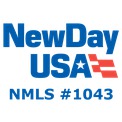How much house can I afford with a VA loan?
For qualified buyers, a VA loan can give you more buying power

The Department of Veterans Affairs (VA) offers a home loan program specifically for active service members, veterans and surviving spouses. While the VA doesn’t act as the lender, it does back these types of mortgages made available through private lenders while offering multiple benefits.
No down payment requirement and no private mortgage insurance are examples of how VA loans can make homeownership even more affordable for military personnel, veterans and family members.
VA mortgages offer significant benefits for borrowers, such as no down payment or private mortgage insurance required, which can increase the chance of homeownership.
Jump to insightHow much house you can afford with a VA loan depends on multiple factors, including income, the amount of debt you have and interest rates.
Jump to insightYou can use tactics for increasing affordability, such as spreading out payments over a longer period or asking for seller concessions.
Jump to insightUnderstanding VA loans
VA loans are one of the many types of home loans available, and the VA backs them, which means the lender can recover some of its money if the borrower defaults on the loan. With less risk to the lender, thanks to this backing, the lender can offer better terms, such as a lower interest rate and lower down payment.
VA loans offer numerous features, including:
- Lower credit score requirements: The VA doesn’t have a minimum credit score requirement for a VA loan. However, VA loan lenders may set their own credit score criteria, which is often at least 640.
- No down payment: VA loans don’t require a down payment as long as the home's sales price doesn’t exceed the appraised value.
- No private mortgage insurance (PMI) required: Lenders often require PMI when you have less than a 20% down payment, which is a monthly fee tacked on to your mortgage. It’s meant to lower the risk to the lender if you default on your loan. However, VA loans don’t impose this requirement, which can save the borrower thousands.
- No prepayment penalties: Borrowers with VA loans don’t face a prepayment penalty for paying off their loan before the maturity date.
- Lifetime benefit for eligible individuals: The lifetime benefit of VA loans means you can use a VA loan more than once, so you can take out another in the future or refinance into another one.
VA loans do require a Certificate of Eligibility (COE), which confirms your eligibility based on your service history and duty status. You must request a COE through the VA, which you can do before you submit your application or during the application process.
» COMPARE: Best VA Loan Lenders
Calculating affordability with a VA loan
Calculating affordability with a VA loan requires considering multiple personal factors, including income, debt-to-income ratio, credit score and other financial obligations.
Income
One large influencing factor on affordability is your income. The more you earn, the more you may qualify for borrowing. Lenders not only want to see your gross monthly income but also your consistency, which means they’ll ask for copies of recent pay stubs, bank statements and employment history.
Debt-to-income ratio
Lenders also look at income when calculating your debt-to-income ratio (DTI). This ratio simply compares your monthly income to your monthly debt obligations, such as credit card debt, auto loans and personal loans.
Most lenders look for a DTI ratio of 36% or less, where no more than 36% of your gross monthly income goes towards debt payments. The VA doesn’t have a maximum DTI number, but the lender can have its own requirements for VA loan applications.
Credit score
Having a higher credit score can have a beneficial impact on your VA loan, both for approval and affordability. Lenders look at your credit score as an indicator of paying your bills on time and how reliable you are as a borrower. Additionally, the higher your credit score is, the better interest rate you qualify for, which can mean a more affordable monthly payment or a bigger loan.
Keep in mind that while there’s no minimum credit score requirement with the VA, the lender may have its own criteria, typically around 640 or higher.
Interest rates
The interest rate you qualify for has a major impact on affordability with a home mortgage, including with VA loans. The lower the interest rate, the more buying power you receive, whereas a higher interest rate may force you to buy a less expensive home.
The good news is VA loans often have lower interest rates compared to average market rates, which can result in substantial savings over the life of the loan. Daniel from Washington worked with his lender to get a lower interest rate on his VA loan. “I would have ended up with a higher rate, but got back too much on closing,” he said. “[The lending officer] used that to get a lower interest rate. Might be a standard practice, but felt like he had my back!”
Down payment
While there’s no down payment required with VA loans, putting money down not only reduces the amount borrowed and interest paid, but it also reduces the VA loan funding fee. It’s a one-time payment made by VA loan borrowers at closing, which is based on a percentage of the loan amount.
The 28% rule and VA loans
While your home affordability with a VA loan depends heavily on your financial situation (including how much debt you currently have, the loan amount and the interest rate), you can use the 28% rule for a quick calculation on affordability. This general rule states you should spend no more than 28% of your monthly gross income on a mortgage payment.
For example, if your monthly gross income is $7,000, you would target a monthly mortgage payment of $1,960.
The 28% guideline is a suggestion, not a rule, explains Dan Green, CEO at Homebuyer.com. “VA-eligible buyers in larger cities like San Diego and San Francisco are likely to spend more on housing than buyers near Fort Knox. Mortgage lenders are more attuned to residual income, which is the money left over after all monthly expenses are paid,” he added.
How to increase home affordability with a VA loan
You may be able to increase your home affordability with a VA loan by paying close attention to the calculation factors mentioned above and improving your financial situation. For example, focusing on increasing your credit score and paying off consumer debt before you apply can impact both loan approval and affordability.
There may be other tactics available to you as well. You can look at longer mortgage terms, such as a 30-year mortgage versus a 15-year option. For example, a $300,000 mortgage with a 7% interest rate and a $0 down payment is $1,995 per month before taxes and insurance for a 30-year loan. However, the same inputs for a 15-year mortgage increases the monthly payment to $2,696.
Lastly, you can ask about seller concessions once you’ve found a property you want to make an offer on. “Seller concessions are when a home seller pays for some or all of a buyer's closing costs, which can include discount points. Each discount point lowers a buyer's mortgage rate by approximately 0.25 percentage points,” Green further explains. A lower mortgage rate can increase the loan affordability.
|
|
|
FAQ
Do I have to pay mortgage insurance with a VA loan?
Mortgage insurance, or private mortgage insurance (PMI), is often required by lenders when borrowers put down less than a 20% down payment. This fee can result in thousands of dollars paid to the lender with no impact on the borrower’s equity.
The good news is VA loans don’t require PMI. This extra fee goes strictly to the lender (and not towards your loan) and lessens the lender’s risk in case a borrower defaults on the mortgage.
What’s an amortization schedule on a VA loan?
An amortization schedule with a mortgage, including VA loans, shows the monthly mortgage payments over the life of the loan. These schedules allow you to see the breakdown of the principal and interest paid over time.
What’s the preapproval process like for a VA loan?
The VA loan lender should be able to provide you with a preapproval letter detailing how much of a mortgage you qualify for. A preapproval letter is useful not only for outlining how much of a home you can afford but also for showing a seller that you’re a serious buyer.
Getting a preapproval letter typically requires a Certificate of Eligibility (COE), providing your Social Security number, recent pay stubs, proof of assets and employment verification.
Bottom line
Thanks to its multiple advantages, a VA loan can put home ownership within reach for those who may not think it's possible. However, anyone who borrows with a VA loan needs to know what factors have the biggest impact on the overall loan affordability, such as your credit score and debt-to-income ratio.
Borrowers have several options for increasing affordability, such as improving their credit scores, decreasing overall debt, or seeking longer mortgage terms.
Article sources
- Consumer Financial Protection Bureau, “What is a VA loan?” Accessed Feb. 21, 2024.
- Department of Veterans Affairs, “VA Home Loan Types.” Accessed Feb. 21, 2024.


